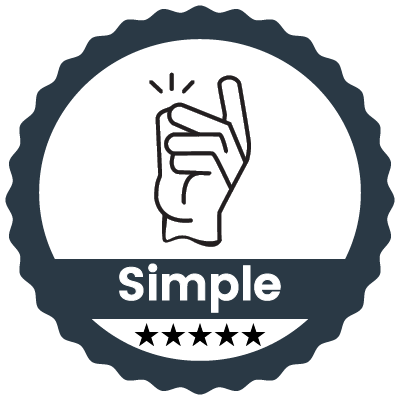As an employer, offering a strong retirement savings plan for your employees isn't just a perk—it's an investment in their future and a vital part of a competitive compensation package. One option available to public education organizations, certain non-profit employers, and ministers is the 403(b) retirement plan. This guide is designed to provide you with the information necessary to comprehend, set up, and oversee a 403(b) plan efficiently within your organization.
- What is a 403(b) Plan?
- 403(b) vs 401(k)
- Key Features of 403(b):
- Benefits of Offering a 403(b) Plan
- Plan Administration
- Compliance and Regulatory Considerations
- Optimize Deductions with SecurePayStubs!
- Discover the benefits of SecurePayStubs:
What is a 403(b) Plan?
A 403(b) plan, also referred to as a tax-sheltered annuity (TSA) plan, offers employees a tax-advantaged way to save for retirement. It functions similarly to a 401(k) plan but is specifically tailored for employees of non-profit organizations and public educational institutions. Under this plan, employees can contribute a portion of their salary into individual accounts, with employers also having the option to make contributions on behalf of their employees.
403(b) vs 401(k)
The 403(b) and 401(k) retirement plans are both tax-advantaged options for saving for retirement, but they differ in eligibility, investment options, employer contributions, and regulation. 403(b) plans are typically offered by public education organizations, certain non-profit employers, and religious institutions, while 401(k) plans are more common in for-profit companies. Understanding these differences can help individuals make informed decisions about their retirement savings strategy.
Key Features of 403(b)
Tax-Deferred Growth: Contributions and earnings are tax-deferred until withdrawal, allowing employees to maximize their savings potential.
Contribution Limits: In 2025, employees can contribute up to $23,500 to their retirement plans, with an additional catch-up contribution of $7,500 available for those aged 50 and older. This provides flexibility for employees to tailor their contributions based on their retirement goals. The contribution limits for previous years were $23,000 in 2024, $22,500 in 2023, $20,500 in 2022, and $19,500 in 2021 and 2020, with corresponding catch-up contributions of $7,500 in 2023 to 2025 and $6,500 in 2022 and 2021.
Investment Options: 403(b) plans typically offer a variety of investment options, including mutual funds and annuities, enabling employees to tailor their investment strategy to their risk tolerance and financial objectives.
Benefits of Offering a 403(b) Plan
For Employers:
By offering a 403(b) plan, employers can:
Attract and Retain Talent: A strong retirement plan enhances your organization's attractiveness to potential employees and improves retention rates by showing a dedication to their financial well-being.
Tax Benefits: Employer contributions are tax-deductible, providing potential tax advantages for the organization.
Boost Employee Morale: Providing employees with a way to save for retirement not only creates a sense of security but also enhances job satisfaction and commitment.
For Employees:
Employees benefit from:
Retirement Savings: A 403(b) plan offers a structured and tax-efficient way for employees to save for retirement, helping them achieve long-term financial security.
Immediate Tax Benefits: Contributions to a 403(b) plan reduce taxable income, resulting in potential tax savings for employees.
Potential for Employer Matching: Employer matching contributions incentivize employees to save more for retirement, further strengthening their retirement savings.
Plan Administration
Implementing and managing a 403(b) plan involves several key steps:
Select a Plan Provider: Choose a reputable provider that offers a diverse range of investment options and robust customer support.
Create a Plan Document: Develop a plan document outlining the terms and conditions of the 403(b) plan, ensuring compliance with regulatory requirements.
Notify Employees: Communicate details of the plan to eligible employees, including enrollment procedures, contribution options, and investment choices.
Manage Contributions: Implement processes for managing employee salary deferrals and employer contributions, ensuring seamless administration of the plan.
- Record keeping: Maintain accurate records of contributions, earnings, and distributions.
- Compliance: Adhere to IRS regulations, including contribution limits and required minimum distributions (RMDs).
- Employee Education: Provide resources to help employees make informed investment decisions.
Compliance and Regulatory Considerations
ERISA Compliance:
As most 403(b) plans are subject to the Employee Retirement Income Security Act (ERISA), employers must adhere to ERISA standards governing plan administration, reporting, and fiduciary responsibilities.
IRS Regulations:
Key IRS regulations impacting 403(b) plans include:
- Universal Availability Rule: Ensuring all eligible employees have the opportunity to participate in the plan, with limited exceptions.
- Contribution Limits: Monitoring contributions to ensure compliance with IRS limits, including catch-up contributions for eligible employees aged 50 and older. (RMDs).
- Required Minimum Distributions (RMDs): Ensuring participants commence distributions by age 73 to avoid penalties.
Annual Reporting:
Employers must fulfill annual reporting requirements, including filing Form 5500 for ERISA-covered plans and adhering to audit requirements for large plans with 100 or more participants, maintaining transparency and regulatory compliance.
Optimize Deductions with SecurePayStubs!
Efficiently manage your employees' deductions, including 403(b) contributions, through SecurePayStubs. Our paystub generator allows users to easily select 403(b) as a deduction option, ensuring accurate calculations.
Discover the benefits of SecurePayStubs
Simplified Deduction Management : Employers can effortlessly incorporate 403(b) contributions within our platform when generating paystubs.
Accurate Calculations : Ensure precise deduction calculations without the risk of errors, promoting financial transparency.
Flexible Options: Empower employers to customize deductions, such as 403(b) contributions, to meet individual employee needs.
Transform your deduction management process with SecurePayStubs. Explore our platform today to simplify paystub and enhance employee benefits!
Instant and Accurate Online Paystub Generator
Our online paycheck stub creator is the perfect solution for businesses that need to generate professional and accurate pay stubs quickly and easily.
This article has been updated from its original publication date of March 11, 2025.




